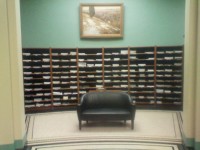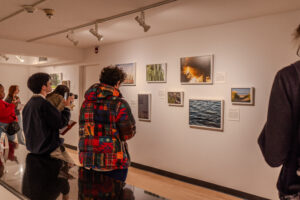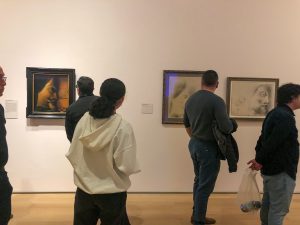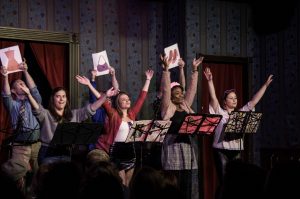
A look inside the Museum of the Art Institute of Chicago finds eager tourists snapping photos, teachers leading noisy children on field trips and tour guides answering questions about ancient artifacts.
Beyond the bustling corridors lie the Ryerson and Burnham Libraries. The art history and architecture books quietly wait for museum staff, art appraisers and students to use the history and knowledge on their pages.
The libraries are largely ignored by the public despite being known to School of the Art Institute of Chicago students, artists and art historians.
“[We have] titles that are aimed to support research on the permanent art collection pieces,” archivist Mary Woolever said. “We’re important to anyone in the community who is interested in any of those topics.”
Walking into the Franke Reading Room, visitors are transported to the gateway of a modern Library of Alexandria.
Woolever said the library has a strong collection of books on surrealism, important collections on Chicago architects like Daniel Burnham, and a rich source of European paintings and American architecture from the 19th and 20th centuries.
Still, the libraries have interesting resources for anyone. Library circulation assistant Raoul Basa said he enjoys the fashion photography archives, which include collections from photographers like Richard Avedon.
“Our Irving Penn archives, in particular, are very interesting to me. They’re my favorite part,” he said.
Housing the circulation desk and the archivist work areas, the reading room – located on the institute’s first floor – is the quietest area of the museum. The room – lined with teal walls, white columns and the names of sixteen important historical writers – holds wooden desks ready for visitors to study and learn.
“I love the structure of our reading room and the architecture,” Basa said. “I think that’s what draws a lot of people in here in the first place.”
According to the Art Institute of Chicago’s website, the Franke Reading Room – open to the public after general admission – was originally designed in 1893 and restored in 1994. It is now used as a study spots for curators, visitors and students.
Silently reading at one of the desks sits Breezy Snyder, a School of the Art Institute of Chicago student.
“I mainly come here for the atmosphere,” she said. “There are other libraries around, but I like this one in particular because it’s quiet and they have great resources for my work.”
According to Woolever, the libraries currently carry almost 500,000 titles while obtaining between 15,000 and 20,000 titles over a year. As museum staff needs further resources, librarians and archivists will collect books through purchase or inter-library loans.
“So no, they do not limit themselves to what’s available here,” she said. “They have the idea and the need, and we fill it.”
The libraries – formed in 1957 when the Ryerson Library and the Burham Library of Architecture were merged – is one of the nation’s “premier research collections for the study of art and architecture,” according to the Art Institute.
Woolever said there are two floors of books above and one floor of books below the Franke Reading room which hold quick reference books, current magazines, encyclopedias and dictionaries.
“Just lots of rare books that are just fascinating to look at. You could be here for days just looking through them,” Basa said. “This [the Franke Reading Room] isn’t even all of it. We have four other levels of books that aren’t visible to the public.”
Basa said that access to the library is essential for people who want to continue their education in art history and architecture.
Snyder, who is studying painting and drawing, said it is required to check out books from the Ryerson and Burnham libraries for some of her classes.
“I think a lot of students come here. If they don’t– I think they should,” she said. “They have a lot of great rare artists’ books; and it’s just like the books you can’t find anywhere else.”
Woolever said, as time goes on, people still seek information and need libraries despite using the Internet as a research tool.
“What we face is that people are doing their Google searches from home and thinking that they’ve got a lot of information,” she said. “But not nearly as much is digitized as people assume. They still have to come back to the paper copies and do more complete research.”
As the enscribed names of Leonardo Da Vinci, Daniel Burnham and Giorgio Vasari look down upon the visitors of the Franke Reading Room, people continue to learn from the ever-expanding Ryerson and Burnham Libraries.












Be First to Comment